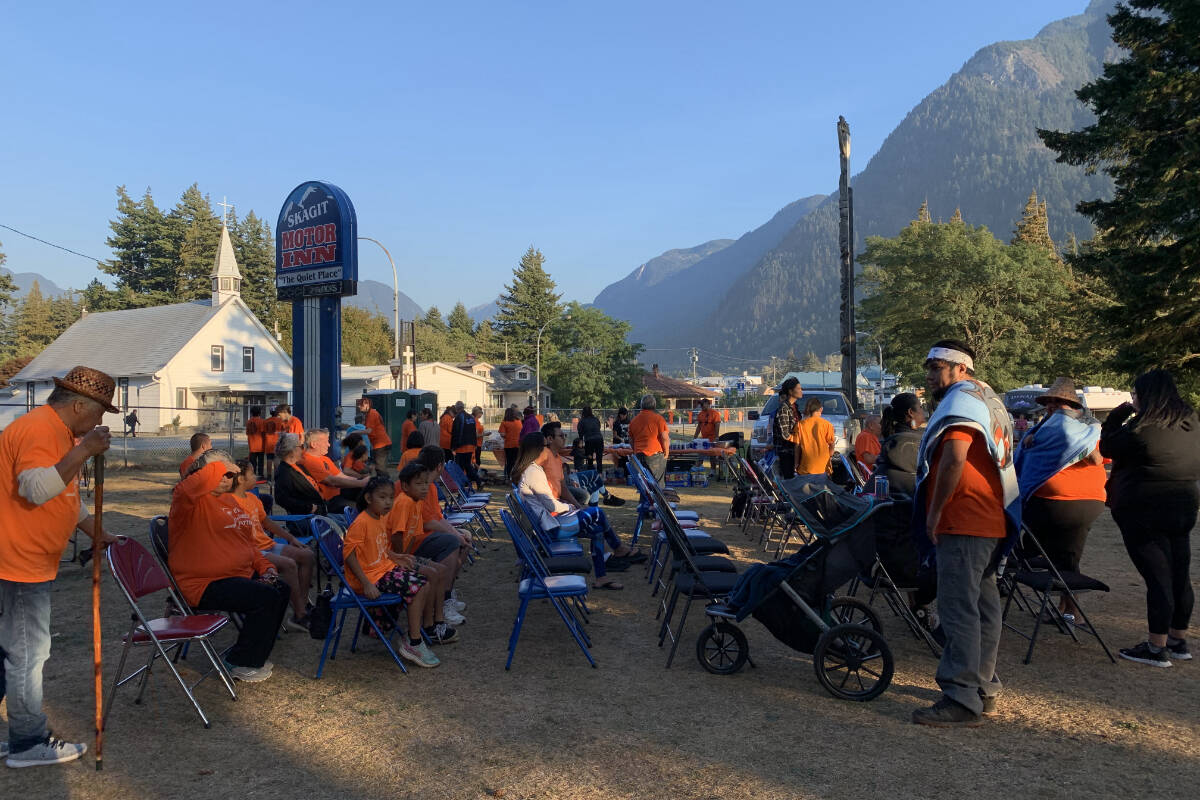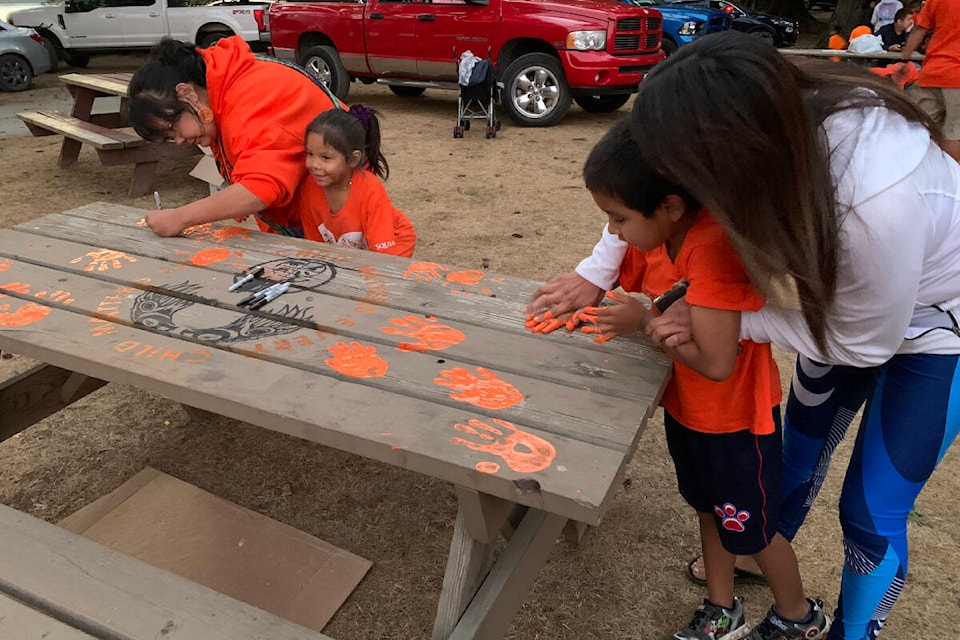Chawathil First Nation has dedicated three benches at the Telte-Yet campsite to residential survivors and Indigenous children who did not make it home to their families.
Last Friday evening (Sept. 30), as part of their Orange Shirt Day and the National Day for Truth and Reconciliation, Chawathil chief and council hosted a barbeque and bench decorating event — which included a drumming ceremony to bless them both. Led and organized by Lucy Gouwenberg, Chawathil’s recreational coordinator, residential school survivors, and members of Chawathil young and old, had the option to use orange paint and their hands to decorate benches at the campsite.
“I think a lot of non-Indigenous people don’t understand the deep meaning of the day,” says Gouwenberg. “So it’s nice to open up our doors and invite the public to come in and educate, and to acknowledge the past, and to understand how to work collectively for our future generations.”
The event was open to the public though mostly members of Chawathil made up the small gathering. This included Chawathil elders and residential school survivors who took the time to speak about their experiences with the residential school system.
“The stories we’re hearing didn’t just start in the ‘80s, or ‘70s, or ‘60s. It started a long time ago. The fact that we have a day for reconciliation took over a hundred years,” says Chawathil Coun. Rhoda Peters. “[But] how long did it take for the Pope to come over and say something? How long did it take the Prime Minister to say something? To make an apology? Too long. So when we have gatherings like this, no matter how big or small, what you see taking place? That’s history…we can be victims or we can be survivors.”
Gouwenberg, who says the event went well, hopes that more people from Hope will attend next year. The purpose of the National Day for Truth and Reconciliation, she says, is to educate the public on what Indigenous people have endured and continue to endure. But it is also a day for Indigenous and non-Indigenous communities to come together and learn how to work with one another.
“The takeaway here is, how are we going to move forward in reconcilliation?” says Gouwenberg. “It’s always been talk, talk, talk. But now we need to actually walk. And I think that’s been brought to light even more after [the graves of 215 Indigenous children were] discovered. And I think its something that we need to keep working together, collectively, not just as a community of Chawathil but as a community of Hope. And really as a nation.”
Orange Shirt Day and the National Day for Truth and Reconciliation both take place on September. The latter acknowledges the legacy of the residential school system and honours the thousands of Indigenous children forced to attend residential schools, many of whom did not make it home to their families. The potential gravesites of more than 10,000 children have been discovered at residental schools so far, first starting with the 215 sites discovered on May 28, 2021 at the Kamloops Indian Residential school. It is believed that number will increase as more schools are searched. For the residential schools from Agassiz all the way to Boston Bar, the potential gravesites of over 1,600 kids were found.
READ MORE: Chawathil First Nation invites Hope to ceremony honouring residential survivors
@KemoneMoodley
kemone.moodley@hopestandard.com
Like us on Facebook and follow us on Twitter.
—

